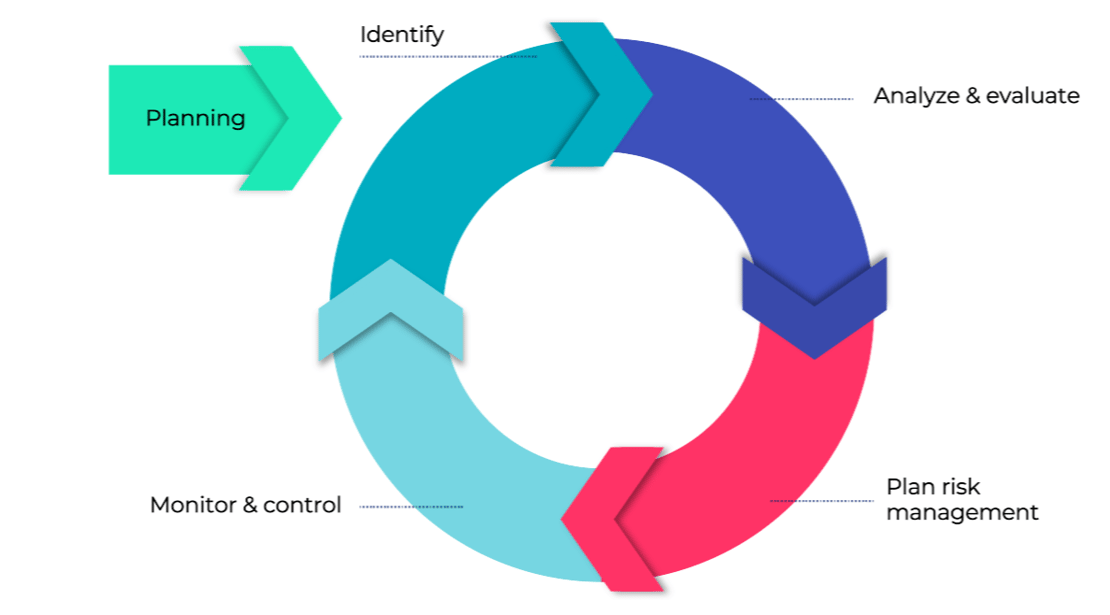
Good risk management prevents crisis management
Most decisions and actions are associated with risks, especially those that involve just going about your business as usual.
What is a risk?
Definition:
One or more events or circumstances that, if they occur, are likely to affect the performance of the business.
There are several types of risk:
- External risks
- Strategic risks
- Project risks
- Process risks
- Supplier risks
- Environmental risks
- Work environment risks
- Information security risks
The danger of too
rudimentary risk management
Organizations often lack both systematic and knowledge-based risk management. It may be carried out by an inexperienced person, which can lead to the management being perceived as an administrative burden that adds no direct benefit. And unexpected problems that arise are dealt with by fire-fighting, resulting in unnecessary delay, stress and frustration. All this can be prevented by effective risk management combined with effective action.
Some basic principles for more effective risk management
A holistic approach is needed to coordinate risk management across an organization so that different parts do not do things differently. Centralized and systematic risk management increases participation and puts risk management higher on the agenda. By controlling and "automating" the management of incidents, it is possible to continuously improve working practices. Finally, the impact of risk management should be measured in order to justify the costs in both the short and long term.
We are into our third year of continuous improvement, with support from CANEA, which has led to us having increased profits of 10 - 12 MSEK during the period.

How we work with
risk management
We always take a holistic approach to risk management, which is an integral part of our CANEA ONE management system support. It is easy to manage and adapt to the varying needs of your business. The system provides case management with support for, for example, the mini-risk approach, SWOT, FMEA and different types of root cause analysis, depending on the method or approach chosen.
The system also supports risk management from a life cycle perspective. In this way, risk management is integrated into the daily work and does not become a one-off event that is only done for show.












Risk management process
Our approach is based on the international standard ISO 31000 - Risk management - principles and guidelines.

Our main advantages
- We bring all kinds of risk management together in one solution.
- CANEA ONE is flexible and can be easily adapted to the varying needs of different businesses.
- Risk management is integrated into the management system, which makes the measures we propose more effective.
- Risk management will be naturally linked to the long-term work on overall objectives through the CANEA Strategy.
- We are sharper than many of our competitors at compliance - for example, ISO 9001, ISO 14001, ISO 27001, and many other standards and industry requirements.
The main benefits
for you as a customer
- Organizations that recognize risks, and provide adequate resources for risk management, protect themselves against uncertainty, increase the security of employees and increase their chances of continued success.
- Reduce downtime, losses and unnecessary expenses.
- Better impact of risk mitigation measures with an integrated management system with built-in reminders for follow-up.
- Easier to demonstrate to stakeholders and authorities that the organization is proactive and meets the relevant requirements.
Part of a
comprehensive system
CANEA ONE has five user-friendly modules. The modules can be used independently, but together they form a comprehensive system for effective business management, linking strategies, projects, processes, workflows and documents.

CANEA knows
risk management
Some of our clients
Canea has helped hundreds of organizations become both more efficient and more profitable. Here are some examples of what we've worked on so far.









